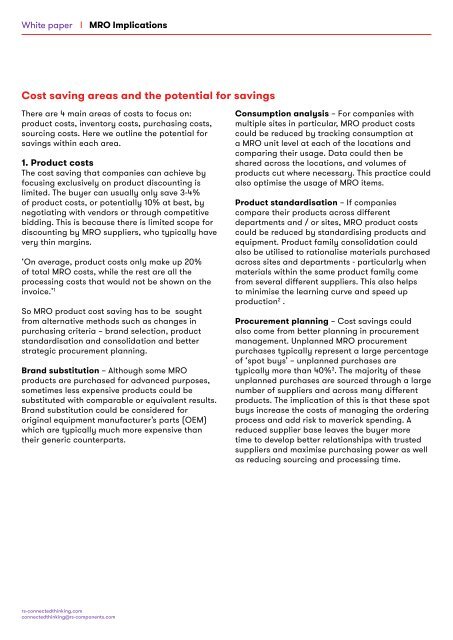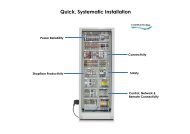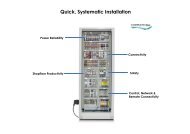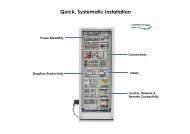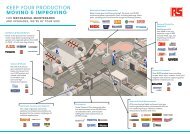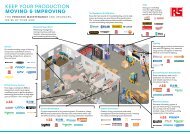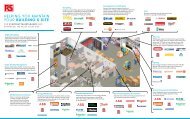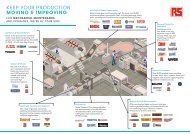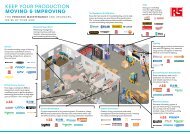MRO implications
You also want an ePaper? Increase the reach of your titles
YUMPU automatically turns print PDFs into web optimized ePapers that Google loves.
White paper<br />
<strong>MRO</strong> Implications<br />
Cost saving areas and the potential for savings<br />
There are 4 main areas of costs to focus on:<br />
product costs, inventory costs, purchasing costs,<br />
sourcing costs. Here we outline the potential for<br />
savings within each area.<br />
1. Product costs<br />
The cost saving that companies can achieve by<br />
focusing exclusively on product discounting is<br />
limited. The buyer can usually only save 3-4%<br />
of product costs, or potentially 10% at best, by<br />
negotiating with vendors or through competitive<br />
bidding. This is because there is limited scope for<br />
discounting by <strong>MRO</strong> suppliers, who typically have<br />
very thin margins.<br />
‘On average, product costs only make up 20%<br />
of total <strong>MRO</strong> costs, while the rest are all the<br />
processing costs that would not be shown on the<br />
invoice.’ 1<br />
So <strong>MRO</strong> product cost saving has to be sought<br />
from alternative methods such as changes in<br />
purchasing criteria – brand selection, product<br />
standardisation and consolidation and better<br />
strategic procurement planning.<br />
Brand substitution – Although some <strong>MRO</strong><br />
products are purchased for advanced purposes,<br />
sometimes less expensive products could be<br />
substituted with comparable or equivalent results.<br />
Brand substitution could be considered for<br />
original equipment manufacturer’s parts (OEM)<br />
which are typically much more expensive than<br />
their generic counterparts.<br />
Consumption analysis – For companies with<br />
multiple sites in particular, <strong>MRO</strong> product costs<br />
could be reduced by tracking consumption at<br />
a <strong>MRO</strong> unit level at each of the locations and<br />
comparing their usage. Data could then be<br />
shared across the locations, and volumes of<br />
products cut where necessary. This practice could<br />
also optimise the usage of <strong>MRO</strong> items.<br />
Product standardisation – If companies<br />
compare their products across different<br />
departments and / or sites, <strong>MRO</strong> product costs<br />
could be reduced by standardising products and<br />
equipment. Product family consolidation could<br />
also be utilised to rationalise materials purchased<br />
across sites and departments - particularly when<br />
materials within the same product family come<br />
from several different suppliers. This also helps<br />
to minimise the learning curve and speed up<br />
production 2 .<br />
Procurement planning – Cost savings could<br />
also come from better planning in procurement<br />
management. Unplanned <strong>MRO</strong> procurement<br />
purchases typically represent a large percentage<br />
of ‘spot buys’ – unplanned purchases are<br />
typically more than 40% 3 . The majority of these<br />
unplanned purchases are sourced through a large<br />
number of suppliers and across many different<br />
products. The implication of this is that these spot<br />
buys increase the costs of managing the ordering<br />
process and add risk to maverick spending. A<br />
reduced supplier base leaves the buyer more<br />
time to develop better relationships with trusted<br />
suppliers and maximise purchasing power as well<br />
as reducing sourcing and processing time.<br />
rs-connectedthinking.com<br />
connectedthinking@rs-components.com


